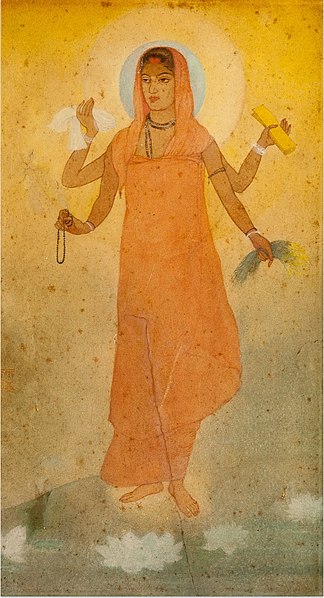The Bengal School of Art, commonly referred as Bengal School, was an art movement and a style of Indian painting that originated in Bengal, primarily Kolkata and Shantiniketan, and flourished throughout the Indian subcontinent, during the British Raj in the early 20th century. Also known as 'Indian style of painting' in its early days, it was associated with Indian nationalism (swadeshi) and led by Abanindranath Tagore (1871–1951), and was also being promoted and supported by British arts administrators like E. B. Havell, the principal of the Government College of Art and Craft, Kolkata from 1896; eventually it led to the development of the modern Indian painting.
Bharat Mata (1905), by Abanindranath Tagore, a pioneer of the movement and Rabindranath Tagore's nephew.
Indian painting has a very long tradition and history in Indian art. The earliest Indian paintings were the rock paintings of prehistoric times, such as the petroglyphs found in places like the Bhimbetka rock shelters. Some of the Stone Age rock paintings found among the Bhimbetka rock shelters are approximately 10,000 years old. Because of the climatic conditions in the Indian subcontinent, very few early examples survive today.
Performance of Patua Sangeet by a Patua, with a pattachitra scroll to illustrate, Kolkata
A mural painting depicting a scene from Mahajanaka Jataka, Cave 1, Ajanta
An Ajanta mural of a royal court
Jahangir Receives Prince Khurram at Ajmer on His Return from the Mewar Campaign, Balchand, c. 1635





